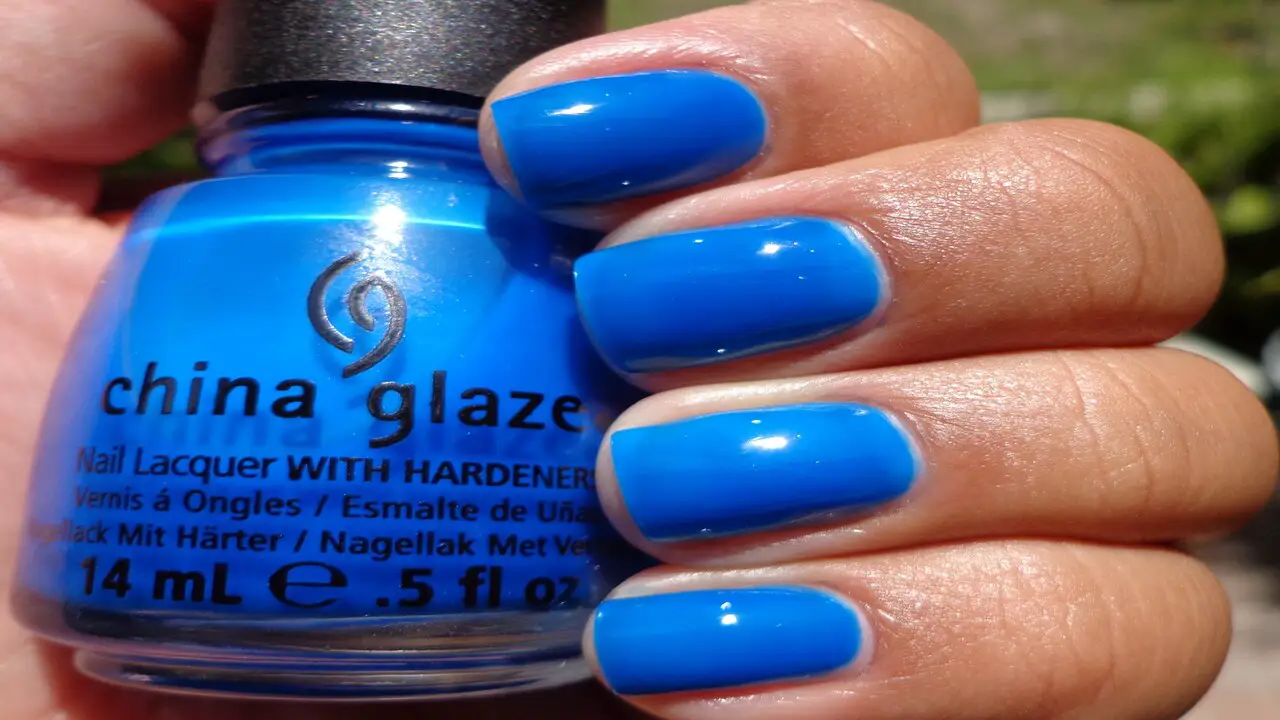Nail polish has been a staple in the beauty industry for decades, providing individuals with endless options for expressing their style and enhancing the appearance of their nails.
While the variety of colors and finishes may be alluring, there is one aspect of nail polish that often goes unnoticed – its strong and often unpleasant odor. Whether you are a frequent user or have caught a whiff of it, the distinctive smell of nail polish is hard to ignore.
But have you ever wondered why nail polish smells so bad? We will explain why does nail polish smell so bad. From the ingredients used to the manufacturing process, we will uncover the reasons behind this beauty product’s notorious aroma.

7 Reasons Why Does Nail Polish Smell So Bad

Understanding why nail polish has a strong and unpleasant odor is of great significance, especially for those in the cosmetic industry or individuals who frequently use nail polish. The pungent smell emitted by nail polish is primarily due to the volatile organic compounds (VOCs) present in its formulation.
These VOCs, such as toluene, formaldehyde, and ethyl acetate, are responsible for the distinct chemical odor associated with nail polish. Knowing why nail polish smells bad is crucial from a health and safety standpoint.
VOCs are known to have adverse effects on human health, including eye, nose, and throat irritation, nausea, dizziness, and, in some cases, even long-term health issues. Here, we discuss why does nail polish smell so bad.
1.Chemical Composition
The strong and often unpleasant odor of nail polish is a result of its chemical composition. Understanding why nail polish smells so bad requires an examination of the various ingredients that make up this popular cosmetic product. Nail polish typically consists of three main components: solvents, resins, and pigments.
The solvents, such as ethyl acetate or butyl acetate, are responsible for keeping the polish in a liquid state. These solvents evaporate quickly when the nail polish is applied, which releases a pungent smell. Additionally, the resins in nail polish provide the desired gloss and durability. These resins, such as nitrocellulose or tosylamide formaldehyde, also contribute to the strong odor.
2.Volatile Organic Compounds (Vocs)

Volatile organic compounds (VOCs) are a group of chemicals that have a high vapor pressure at room temperature, leading to their release into the air as gases. One common product that contains VOCs is nail polish. Many individuals wonder why nail polish has such a strong and unpleasant odor. The answer lies in the composition of nail polish and the presence of these VOCs.
Nail polish is typically made of a mixture of solvents, resins, pigments, and plasticizers. These solvents, such as ethyl acetate and butyl acetate, are responsible for the strong odor. When you apply nail polish to your nails, these solvents begin to evaporate, releasing VOCs into the surrounding air. The VOCs are open at a high rate, resulting in a strong smell.
3.Ethyl Acetate
Ethyl acetate, a common chemical compound found in nail polish, often gives nail polish a bad smell due to its distinctive odor. Nail polish manufacturers use ethyl acetate as a solvent to dissolve other ingredients and create a smooth and glossy finish on the nails.
While this compound plays a crucial role in the formulation of nail polish, its strong smell can be off-putting to many individuals. The pungent odor of ethyl acetate in nail polish is primarily due to its volatile nature.
Ethyl acetate easily evaporates at room temperature, releasing its odor into the surrounding environment. This characteristic volatility is necessary for nail polish to dry quickly and efficiently. However, it also means that the smell can linger in the air long after the application process.
4.Acetone

Acetone, found in nail polish removers, is the primary reason for the distinct and often unpleasant smell of nail polish. This colorless liquid is highly volatile and has a strong odor that can be overpowering to some individuals. The reason behind the strong smell of acetone in nail polish is its rapid evaporation rate, which allows it to dissolve and remove nail polish from the nails quickly.
Due to its chemical composition, people may perceive the odor of acetone as unpleasant. Carbonyl groups in its molecular structure attribute the distinct smell of acetone, which is a ketone. These groups are responsible for the spicy and somewhat sweet-smelling scent that is often associated with nail polish removers.
5.Formaldehyde
Nail polish is a popular cosmetic product handy to enhance the appearance of nails. However, it is no secret that nail polish has a distinct and often unpleasant smell. A chemical compound called formaldehyde is one of the main culprits behind this odor. Nail polish commonly uses formaldehyde as a preservative and to help it adhere to the nails.
While it serves a practical purpose, its strong and pungent odor can be off-putting to many individuals. This compound easily evaporates at room temperature, releasing its characteristic odor into the air. Additionally, our senses can easily detect even small amounts of formaldehyde because it has a low odor threshold. Nails, being porous, can absorb the chemicals present in nail polish, which amplifies the smell.
6.Drying Agents

Drying agents are crucial components in the formulation of nail polish, as they accelerate the evaporation of solvents, resulting in a quick and efficient drying process. However, one prevalent drawback of using drying agents in nail polish is the distinct and often unpleasant odor that accompanies them. This raises the question: why does nail polish-smell so bad? The answer lies in the composition of these drying agents.
Most commonly, nail polishes contain chemicals called volatile organic compounds (VOCs), such as acetone, toluene, and formaldehyde. These VOCs are responsible for the strong and pungent smell that emanates from nail polish. They evaporate quickly, aiding in the drying process, but also releasing intense fumes that can be overwhelming.
7.Lack Of Ventilation
The unpleasant odor emanating from nail polish is a common concern for many individuals. One of the primary reasons behind this unappealing smell is the lack of proper ventilation during the application and drying process.
Nail polish contains a combination of chemicals, including solvents, resins, and pigments, which contribute to its distinct odor. When exposed to air, these chemicals release volatile organic compounds (VOCs), resulting in the strong smell often associated with nail polish.
The absence of adequate ventilation exacerbates this issue. When someone applies nail polish in an enclosed space with limited airflow, the concentration of VOCs in the air increases, resulting in a more potent and lingering smell. Without proper ventilation, the fumes emitted by the nail polish can become trapped in the room. Making the odor even more pronounced and discomforting.
Conclusion:
The unpleasant smell of nail polish is due to the chemicals used in its formula. While some may find the smell off-putting, it is important to remember that these chemicals are necessary for the polish to dry quickly and adhere to the nail. However, there are now many options for low toxicity and even odorless nail polishes.
Making it easier for those with sensitivities or preferences to enjoy still painting their nails without the strong smell. As with any product, it is always important to use nail polish in a well-ventilated area and to follow proper safety precautions. If you read the above outline properly, we hope you now understand why does nail polish smell so bad.
FAQs:
1.Why Does Nail Polish Have Such A Strong Odor?
Ans: Nail polish contains volatile chemicals such as solvents and resins that evaporate and release strong fumes, resulting in the characteristic bad smell. Nail polish is a popular cosmetic product handy primarily for enhancing the appearance of fingernails and toenails. It is composed of a unique blend of ingredients that work together to achieve a glossy and long-lasting finish.
2.What Causes The Chemical Odor In Nail Polish?
Ans: Volatile organic compounds (VOCs) like toluene, formaldehyde, and ethyl acetate, which are commonly found in nail polish formulation, primarily cause an unpleasant smell.
3.Are There Any Health Risks Associated With The Strong Smell Of Nail Polish?
Ans: Prolonged exposure to the fumes emitted by nail polish can potentially cause headaches, dizziness, and respiratory irritation. It may even have long-term health effects due to the presence of harmful chemicals.
4.Can Nail Polish Be Made Without The Strong Odor?
Ans: Yes, you can make nail polish without a strong odor. Many companies now offer low-odor or odorless nail polish formulas that contain fewer volatile organic compounds (VOCs), which are responsible for the strong smell.
5.Are There Any Health Risks Associated With Inhaling Nail Polish Fumes?
Ans: Prolonged exposure to nail polish fumes can cause headaches, dizziness, and irritation to the eyes, nose, and throat. It is advisable to use nail polish in a well-ventilated area to minimize potential health risks.








